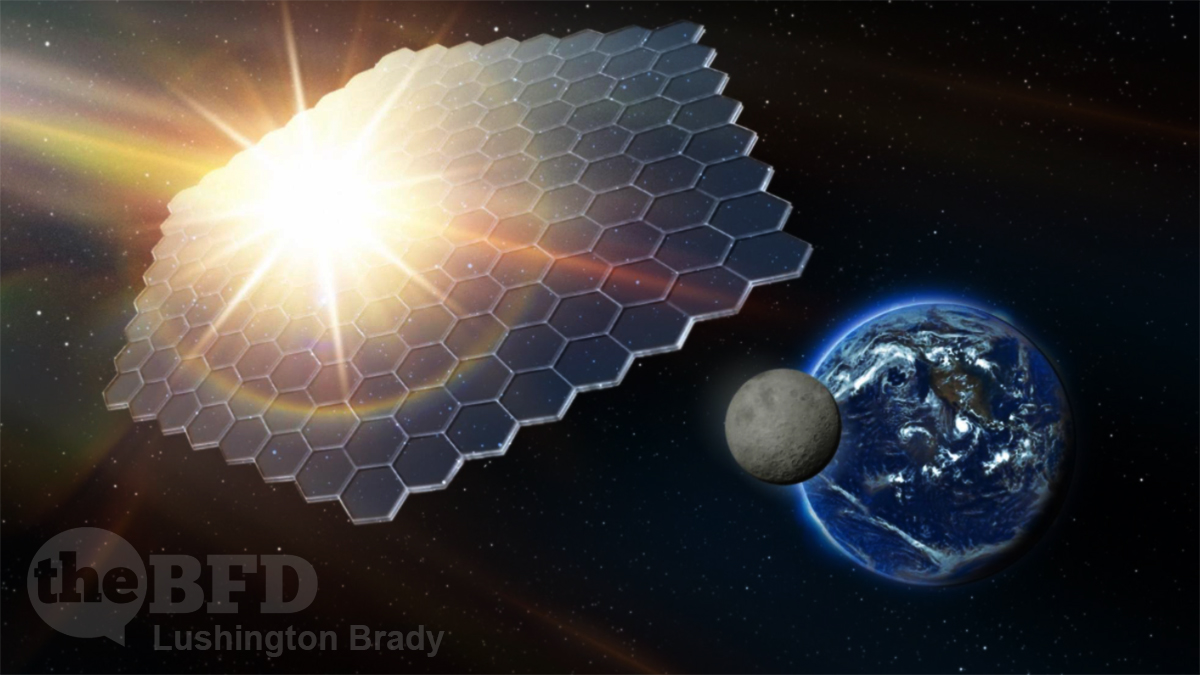OPINION
Climate modeller Dr Nakamura Mototaka states that climate models are “useless junk” and “produce gravely misleading output”. One major reason for this is that they treat solar output as a constant – which we know perfectly well is simply absurd.
The sun’s output is constantly fluctuating, often dramatically. Some scientists are adamant that the sun remains the single biggest driver of terrestrial climate.
So, if we really do want to cool the climate (although why is a good question, given that cooling climates go hand in hand with misery and starvation), instead of crippling the global economy and wreaking environmental havoc by chasing ‘renewable’ chimaeras – why not just screen out the sun a bit?
Anyone who’s ever baked in the sun on a hot day knows what a difference a bit of shade can make. What if we could scale a basic parasol up to global scale? The idea isn’t as far-fetched as it might sound.
According to a March report by US National Academies of Sciences, Engineering, and Medicine (NASEM), more investment should go into researching the viability of solar geoengineering as a means for fighting climate change. Caution is advised, however, as the method has the potential to worsen the problem it aims to alleviate.
Take a look at not just the vast lakes of pollution from producing solar panels, let alone the devastating environmental effects of wind farms and the economic havoc wreaked (on mostly poor people) by “Net Zero” policies, and tell me they’re not making things worse already.
Robert Laswell, editor for renewable energy firm Semprius [says…] research into solar geoengineering, “from ocean sulfur cycle enhancement to stratospheric aerosol injection need to start getting significant funding now,” before these become “a last resort option when it’s already too late.”
Leaving aside the alarmist narrative (and anyone who says “global temperatures could exceed four degrees Celsius over preindustrial measures by the end of the century” with a straight face is an alarmist on stilts), why not investigate these? Scary as they sound, potential technologies such as stratospheric aerosol injection at least involve chemicals with a short lifespan in the atmosphere. If it goes bung, just stop and things should return to normal in a short time.
But such a technology would blunt what we can be forgiven for suspecting is the real goal of ‘climate action’: imposing an authoritarian global regime of wealth redistribution.
“Calling for solar geoengineering is an increasingly desperate and lame excuse to prop up the failing fossil fuel industry,” Joshua M Pearce, PhD of Western University told us in an interview.
As opposed to propping up the failing ‘renewables’ industry with trillions of taxpayer dollars.
Don’t worry, it gets even funnier.
According to Pearce, “we do not need solar geoengineering to mitigate climate change, we simply need to get out of the way and let economics run its course.”
I’ll go with that: so stop every dollar of taxpayer subsidising of ‘renewables’, let alone authoritarian measures such as banning petrol cars or natural gas heating – and watch the entire ‘renewables’ grift collapse overnight.
Then there’s this knee-slapper:
Millions could be invested into testing the method, only for scientists to conclude that it can not safely be deployed at an impactful scale.
As opposed to investing trillions into ‘renewables’.
The two main approaches for solar geoengineering are stratospheric aerosol injection (SAI), which involves spraying reflecting particles, aerosols, into the upper atmosphere, and marine cloud brightening (MCB), which uses sea salt to encourage added cloud formation over the ocean.
In January this year, we reported that Bill Gates backed a proposal by Harvard scientists to conduct an experiment testing the viability of SAI. The scientists behind the experiment, called the Stratospheric Controlled Perturbation Experiment (SCoPEx), postponed a test flight scheduled for this year citing an outcry from environmentalists. If it does eventually go ahead, the experiment will cost approximately $20 million and it aims to release roughly 2 Kg of chemicals, including sulfates and calcium carbonate, into the stratosphere. Last month, researchers from Australia announced that they will test a form of marine cloud brightening to help reduce the coral bleaching of the Great Barrier Reef.
Interesting Engineering
Another potential technology might be deploying vast solar sails to act as giant parasols. In fact, studies have investigated just such a possibility. One study estimated the cost of a “space sunshade” at US$130 billion over 20 years with an estimated lifetime of 50-100 years.
Which is a fraction of the cost spent so far on worse-than-useless “Net Zero” policies.

